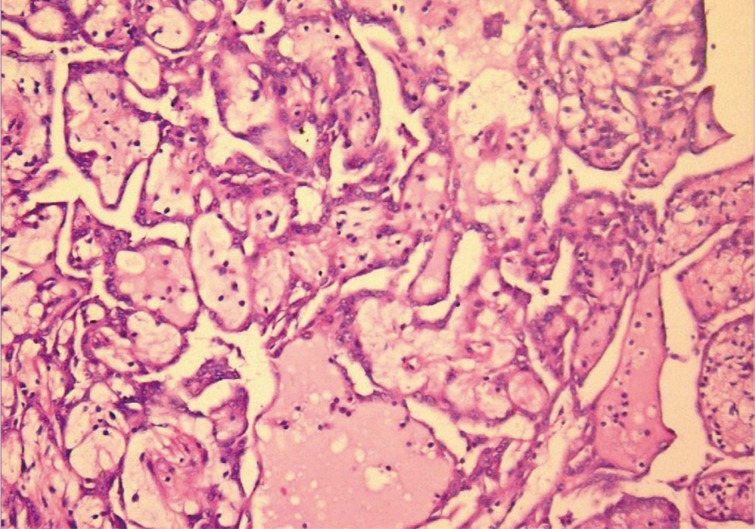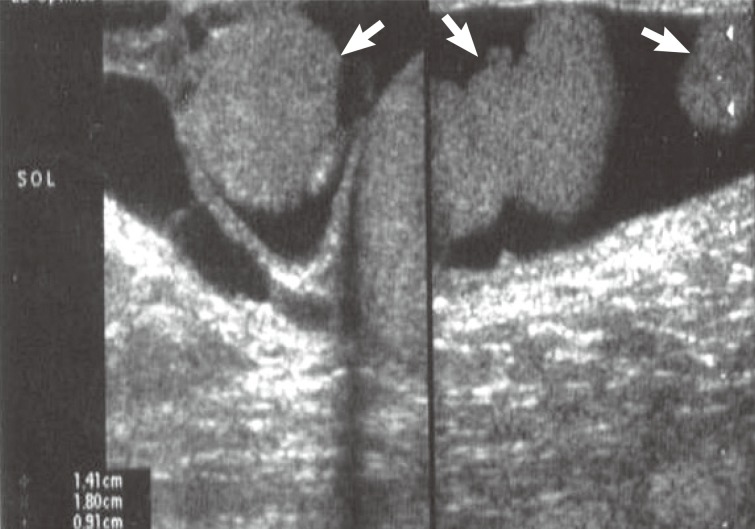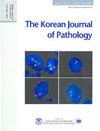Well-differentiated papillary mesothelioma of the tunica vaginalis: a case study and review of the literature.
Korean Journal of Pathology
Pub Date : 2014-06-01
Epub Date: 2014-06-26
DOI:10.4132/KoreanJPathol.2014.48.3.225
引用次数: 15
Abstract
Well-differentiated papillary mesothelioma is an uncommon tumor of the testes that usually presents as a hydrocele. Here, we present the case of one patient who did not have a history of asbestos exposure. The tumor was localized in the tunica vaginalis and was composed of three pedunculated masses macroscopically. Microscopically, branching papillary structures with focal coagulative necrosis were present. In addition to immunohistochemistry, simian virus 40 DNA was also tested by polymerase chain reaction. This report presents one case of this rare entity, its clinical and macroscopic features, and follow-up results.



阴道膜高分化乳头状间皮瘤:个案研究及文献回顾。
高分化乳头状间皮瘤是一种罕见的睾丸肿瘤,通常表现为鞘膜积液。在这里,我们提出的情况下,一个病人谁没有石棉暴露史。肿瘤定位于阴道膜,宏观上由三个带蒂肿块组成。镜下可见分支状乳头状结构伴局灶性凝固性坏死。除免疫组化外,还采用聚合酶链反应检测猴病毒40 DNA。本文报告1例罕见病例,其临床、宏观特征及随访结果。
本文章由计算机程序翻译,如有差异,请以英文原文为准。
求助全文
约1分钟内获得全文
求助全文

 求助内容:
求助内容: 应助结果提醒方式:
应助结果提醒方式:


